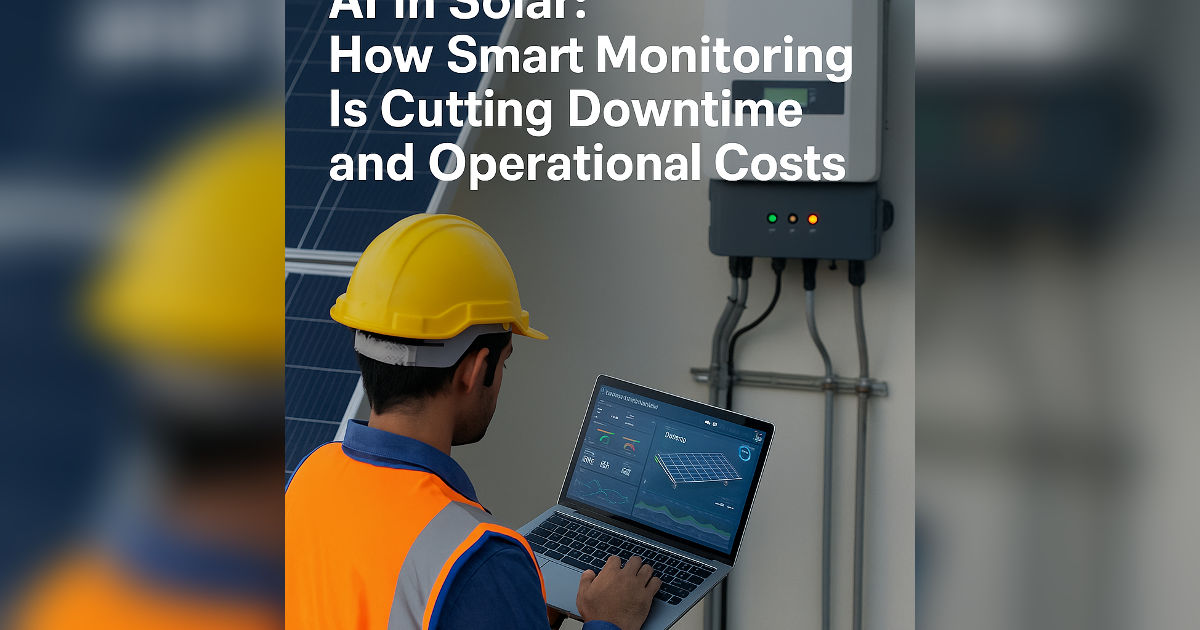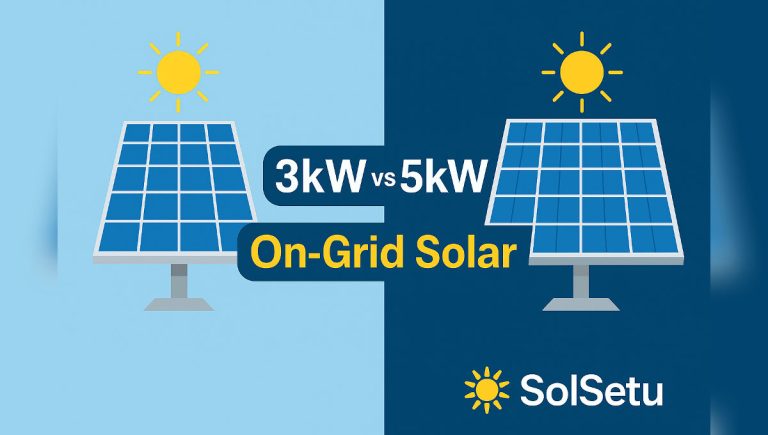AI in Solar: How Smart Monitoring Is Cutting Downtime and Operational Costs
AI in Solar: How Smart Monitoring Is Cutting Downtime and Operational Costs
By SolSetu News Desk | Published on October 19, 2025

New Delhi, October 19 (SolSetu News) — Artificial intelligence (AI) is rapidly reshaping solar operations and maintenance (O&M). By combining IoT sensors, thermal imaging and machine-learning models, operators are detecting faults earlier, scheduling targeted repairs and materially reducing unplanned downtime — in some deployments by tens of percentage points compared with traditional reactive maintenance. :contentReference[oaicite:0]{index=0}
How AI reduces downtime
AI systems analyse streams of performance telemetry (panel output, inverter telemetry, temperature, irradiance and weather forecasts) to spot anomalies that precede failure. Thermal-image analysis powered by AI can flag hot-spots and bypass diode issues in minutes rather than days, enabling precise interventions before large yield losses occur. Industry case studies and surveys show predictive maintenance programs using AI can cut unplanned outages and related O&M costs significantly. :contentReference[oaicite:1]{index=1}
Real-world deployments and results
Indian and international vendors report measurable improvements: smart inverters with built-in diagnostics and cloud analytics now provide pre-failure alerts (often days ahead), allowing technicians to service specific inverters rather than troubleshooting whole strings — a change that reduces truck rolls and mean time to repair. Corporate deployments (including large C&I and utility sites) are reporting downtime and cost reductions consistent with industry research on predictive maintenance. :contentReference[oaicite:2]{index=2}
AI tools used in the field
- Thermal and drone imaging analysed by convolutional neural nets to detect module defects quickly. :contentReference[oaicite:3]{index=3}
- Time-series models (LSTM, XGBoost) for forecasting output and detecting drift in module performance. :contentReference[oaicite:4]{index=4}
- Edge AI on smart inverters and gateways for instant anomaly detection and cloud-assisted triage. :contentReference[oaicite:5]{index=5}
Benefits beyond reduced downtime
Besides fewer outages, AI enables better yield forecasting (helpful for grid scheduling and PPA settlements), optimised cleaning schedules (reducing water use and O&M trips), and longer asset life through early mitigation of damaging faults. These benefits are attracting investors and helping reduce overall levelised cost of energy (LCOE) from solar projects. :contentReference[oaicite:6]{index=6}
Challenges and considerations
Adoption hurdles include the need for standardised telemetry, secure data pipelines, and skilled teams to act on AI alerts. For distributed rooftop portfolios, connectivity and data quality remain constraints — though hybrid solutions (edge AI + occasional cloud sync) are increasingly effective. :contentReference[oaicite:7]{index=7}
Outlook for India
As India’s installed solar base grows, AI-driven O&M will move from “nice to have” to essential — especially for large portfolios and hybrid solar+storage projects where asset availability has high commercial value. Early adopters who combine smart inverters, drone thermography and robust analytics are already seeing meaningful reductions in unplanned downtime and O&M spend. :contentReference[oaicite:8]{index=8}





